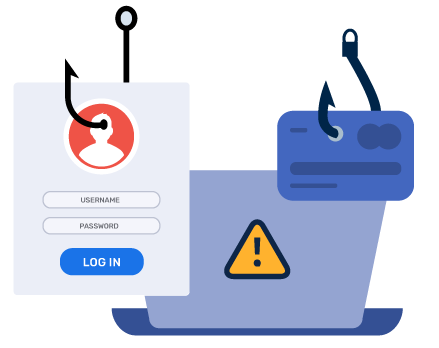
2024-3-22 14:30:3 Author: securityboulevard.com(查看原文) 阅读量:5 收藏
Reading Time: 6 min

From sophisticated hacking schemes that bring multinational companies to a standstill, to small-scale phishing scams that defraud unsuspecting internet users like you and me – all fall within the scope of Cybercrime. Cybercrime is an extensive umbrella term that can refer to a wide range of malicious activities in cyber space. In recent times, cybercrime is getting hard to detect and even harder to stop. That doesn’t mean, we are all doomed! Thankfully, there are effective techniques and technologies in place to protect yourself online.
By 2028, the cost associated with cybercrime might hit a whopping $13.82 trillion! This is not good news for organizations, still lagging behind in deploying preventive measures. If we don’t put a leash on this beast, things could get really messy.
What is Cybercrime?
Cybercrime is the term coined for criminal activities carried out using digital means. For example, unauthorized access to anyone’s computer is considered cybercrime. Cybercrime can compromise network systems, email security, and your online identity. It can also involve large-scale data breaches affecting corporations and governments, perpetrated by the use of technology.
The internet is like a big, dark place where people can hide easily. This makes it a good hiding spot for people who break the law online. Cybercriminals use the internet to carry out illegal activities anonymously. This makes it increasingly difficult to find or stop them.
Types of Cybercrime
Cybercrime manifests in various forms, each with its own unique characteristics and motives:
Financial Fraud
Financial fraud is a range of illegal activities or cybercrime, driven by a financial motive or having financial gain as their end goal. Financial fraud may involve phishing scams, credit card fraud, account takeover, ransomware, business email compromise, etc. Many of these scams trick people into giving away personal information. Organizations are now using DMARC to fight some of these cybercrime activities, when they are initiated via fake emails.
Identity Theft

Online identity theft is a real problem. Cybercriminals have many tactics up their sleeve to grab your personal details. Sensitive PII (personally identifiable information) like your social security number, credit card info, and passwords are usually what they wish to extract. With this information, they can steal your identity and carry out cybercrime in your name!
Harassment and Cyberstalking
With the social media revolution, cyberstalking and harassment have become one of the common forms of cybercrime. Through social platforms, people are stalked and threatened, which can seriously disrupt their mental peace and wellbeing. These online attacks can lead to manipulation, severe mental distress, and cause emotional and psychological harm.
Most platforms and social media forums offer options to report individuals who may be harassing you online. However, if that doesn’t help, it is advisable to get in touch with law enforcement agencies.
Hacking
Hacking is when someone gets into computer systems, networks, digital accounts, electronic devices or accesses your data without permission. There are multiple reasons why these cybercriminals may hack someone. It could be for stealing data and credentials, spying, or just to cause distress. Hacking for illegal or malicious purposes is considered cybercrime.
However hacking is not always malicious. Ethical hackers use their hacking skills to identity security vulnerabilities in existing systems. They are hired by security companies to help detect areas of exploitation in corporate digital infrastructures.
DDoS Attacks
We’ve got the DDoS (Distributed Denial of Service) attacks as another type of cybercrime. These attacks overload websites or networks with too much traffic. The motive behind this cybercrime could be financial gain, or just to cause large-scale disruption and havoc. If these attacks persist for longer, they could cause serious service disruptions and make businesses that rely on online platforms come to a standstill. This ultimately leads to huge financial losses.
Malware
Last up there’s Malware. It is a harmful software that can damage or disrupt computers, devices, networks and servers. Viruses, worms, trojans, spyware, and ransomware are all various types of malware. Malware can even copy themselves and spread..
How do Cybercriminals operate?
Cybercriminals leverage technology for their operations. Although not always the case, most cybercriminals in recent times are skilled techies who know how to exploit internet resources. While many function on the surface web, the dark web is the hub for cybercriminals. This hidden part of the internet allows them to operate anonymously, leaving little to no digital trail.
Let’s discuss some common ways in which cybercriminals operate:
Phishing and Spoofing

Some of the most common ways these criminals operate is by Phishing and Spoofing. Phishing is when cybercriminals impersonate legitimate entities like individuals or organizations to defraud victims. While spoofing is a cybercrime that involves forging domain names, websites or email addresses to impersonate a trusted source. Both of these tactics can disclose sensitive information to attackers. So always be careful.
Ransomware Attacks
In Ransomware, the victim’s data, files or operating system gets locked up and then the attackers ask for money in exchange for decryption. These attacks can make organizations, like hospitals, governments, or individuals like you and me lose huge amounts of money. Paying the ransom is often not enough to get back access to your files.
Social Engineering
Social engineering tricks people into giving away private information through psychological manipulation. It’s often used in combination with other cyber attacks like phishing. This shows that “human error is often the biggest security vulnerability”.
Zero-Day Exploits
Zero-day exploits use unknown weaknesses in software or hardware. They are dangerous because they cannot be stopped until the problem is found and fixed. The only way around these attacks is by taking proactive preventive measures. Once the attack is unleashed there is rarely any way to prevent it since the vulnerability is unknown.
The Impact of Cyber Crime
The impact of cybercrime is more than we think. Daily, it causes people and businesses to lose millions of dollars. With the introduction of AI and automation, it has now become a major issue than before.
Cybercrime can cause:
- Financial damage
- Reputational damage
- Customer loss
- Data loss
- Stolen information and identity
- Emotional and psychological distress
- Legal consequences
Cybercrime Examples: Real-life Incidents & News
Let’s take a look at a few of the real-life cybercrime incidents.
1. REvil’s Kaseya Ransomware Heist
On the 4th of July weekend in 2021, the REvil ransomware group launched an attack on Kaseya, a company providing IT management software. This attack exploited vulnerable Kaseya’s VSA servers, affecting between 800-1500 businesses downstream and 60 Kaseya direct customers so far.
The attackers allegedly demanded a $70 million ransom. This incident highlighted the risks associated with supply chain vulnerabilities and the potential for widespread disruption from a single point of compromise.
2. Equifax Data Breach
In 2017, Equifax, one of the largest credit reporting agencies, suffered a massive data breach that exposed the personal information of approximately 147 million consumers. The breach occurred due to a failure to patch a known vulnerability in the company’s web application.
The Equifax breach led to widespread outrage and scrutiny over the company’s handling of sensitive consumer data. It also resulted in numerous lawsuits, regulatory fines, and long-term damage to consumer trust in the credit reporting industry. Equifax Inc. agreed to pay at least $575 million, (allegedly up to $700 million) in compensation.
3. SolarWinds Supply Chain Attack
In late 2020, a sophisticated supply chain attack targeted SolarWinds, a leading provider of IT management software. Cybercriminals compromised SolarWinds’ software update mechanism to distribute malware to thousands of organizations worldwide.
The SolarWinds attack resulted in unauthorized access to sensitive data within government agencies, technology firms, and other organizations. It underscored the vulnerability of software supply chains and the potential for far-reaching cyber espionage campaigns.
Preventing Cybercrime: Recommendations on Boosting Your Defenses
To fight cybercrime, you need to be well-informed and proactive. By learning about cyber attack vectors, and by carefully strategizing and implementing preventive measures, you can protect yourself. Let’s discuss some tried and tested methods to reduce the risk of cybercrime:
Email Security Technologies
Emails often attract cybercriminals, and are a very popular medium for launching attacks. Using technologies like encryption, spam filters, and email authentication protocols are crucial for protection. These measures help keep malicious emails at bay and secure the content of your emails from prying eyes.
At PowerDMARC, we simplify email security by making DMARC deployment effortless for all! Our hosted solutions allow you to save both time and cost, with a range of additional tools and features for well-rounded domain security.
Security Awareness Training
Human errors are the primary cause of successful cyber attacks. Training programs teach users how to spot and avoid threats like phishing emails and malicious attachments. This education builds a security-minded culture, strengthening defenses against cyber threats.
Data Backup and Recovery
Cyberattacks can lead to the loss of important data that you may never be able to recover! Regularly backing up your data means you can get back lost information quickly after an attack. It reduces the risk of business disruptions, and the loss of crucial business information. Making backups is a major step in staying strong against cybercrime.
AI and ML for Cyber Defense
Rising technologies like AI (Artificial Intelligence) and ML (Machine Learning) help us fight cyber threats by quickly analyzing data, detecting patterns of exploits, and reacting to attacks right away.
With That Said
Cybercrime keeps changing and getting more complex as the years roll by, so we always need to be evolving and upgrading our defenses. As technology gets more sophisticated, crooks who commit cybercrime also get better at what they do.
However, by having an awareness-first mindset to learn about impending dangers, following cybersecurity best practices, and collaborating with professionals (security experts or companies), we can considerably lower the risks associated with cybercrime.

*** This is a Security Bloggers Network syndicated blog from PowerDMARC authored by Ahona Rudra. Read the original post at: https://powerdmarc.com/what-is-cybercrime-types-examples/
如有侵权请联系:admin#unsafe.sh